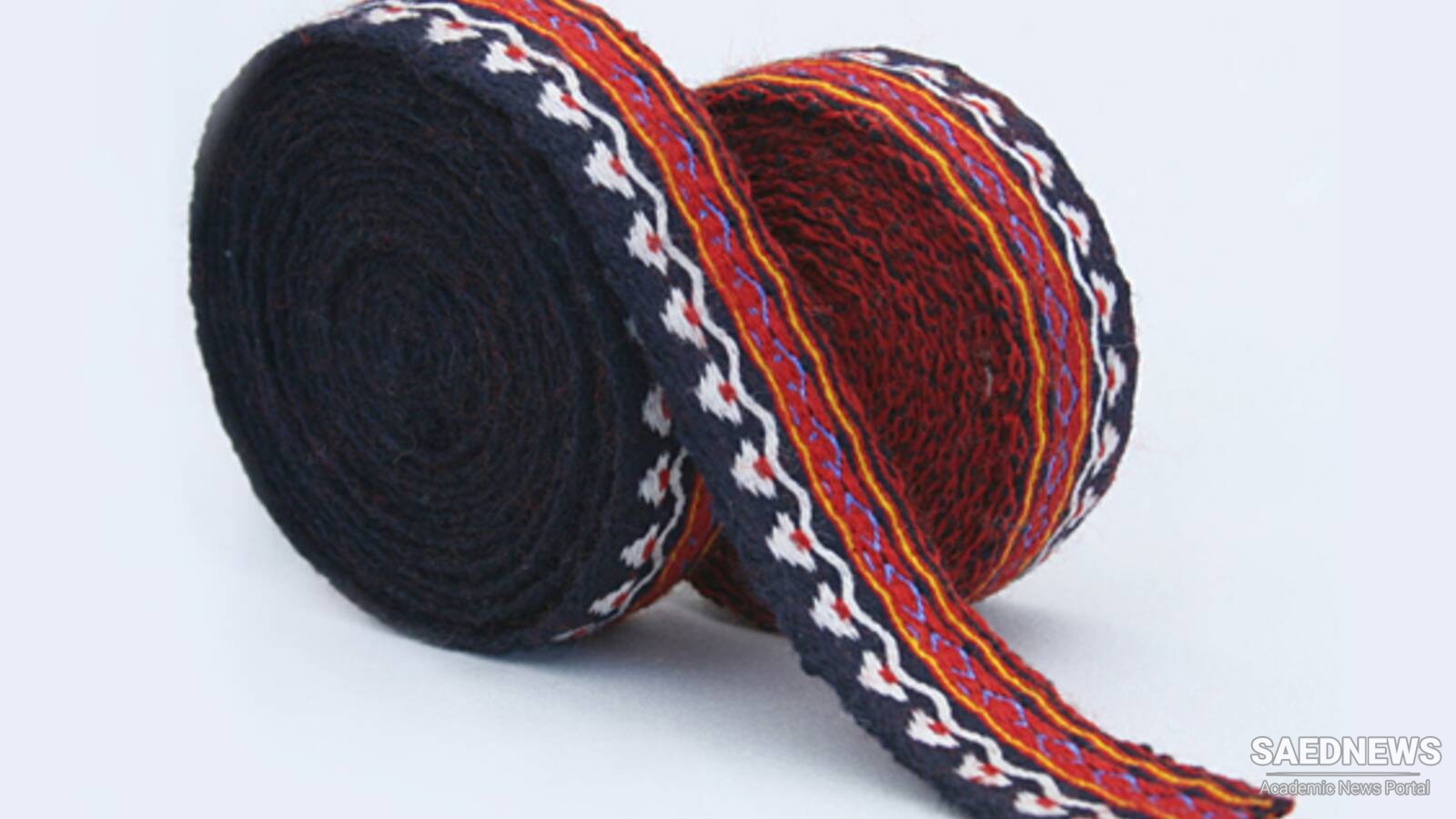These products, which are mostly woven by Alamut women, are quite durable and tight and can be used for more than one purposes. But they are often used in the clothing and clothes design industry for decorating the collars, edges of skirts or sleeves, belts, shoelaces, ties, baby swaddling clothes and other accessories. And if it is made from thick yarns, the Pan Bafi can be used to set up tents or tie the muzzles of horses or camels, too. Today we know a little about the history of Pan Bafi. How and when this handicraft was introduced in Iran are questions that still need to be answered. The oldest remaining Pan Bafi artifact belongs to Egypt.
The basic materials of Pan Bafi are natural and, occasionally, synthetic yarns. But they are usually woven from a kind of silk yarn called “Kaj” yarn. The tools of Pan Bafi consist of 1. “Karchoob”: the wooden machine of Pan weaving which is in fact a small and portable loom. When the yarns are prepared, they are inserted on two sides of the loom. 2. Chapar: it is a square, rectangular, triangle or another polygonal plate from thin wood, talc or cardboard. They have multiple holes through which the yarns pass. 3. Kart 4. Pudchin: it is a wooden tool that twists the wefts while weaving.
In Pan Bafi, the wraps are stretched either vertically or “Istadeh”, or laid on the ground or “Khabideh”. The stretching of the wraps is done according to the predesigned patterns. Some of them are “Chashm e Khorus” or the eyes of the rooster, “Hasht Chapar”, “Bist o Noh Chapar”, “Modakhel”, “Nimeh Modakhel” and “Pichak”. The patterns and designs of Pan Bafi are most commonly created from the memory of their weavers.
The most unique trait of Alamut strips is their fineness, high quality, special technique, magnificent skills and strength. Another trait of these crafts is traditional dyeing of the yarns. Natural materials such as mulberry leaves (for golden pigments), onion skin (orange), walnut skin (brown) and “Nirask” (a kind of wild barberry) are used to dye the yarns.


 Panzanella: Special Dish for Vegans
Panzanella: Special Dish for Vegans














































